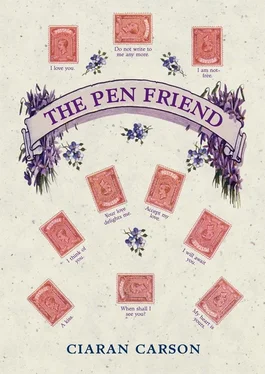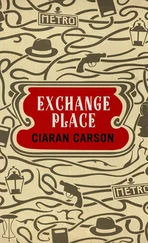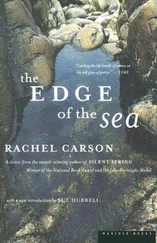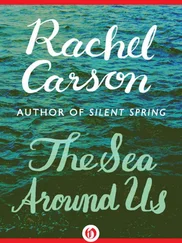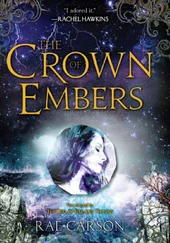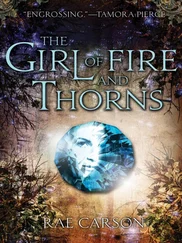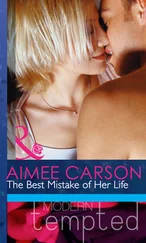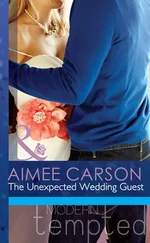Ciaran Carson - The Pen Friend
Здесь есть возможность читать онлайн «Ciaran Carson - The Pen Friend» весь текст электронной книги совершенно бесплатно (целиком полную версию без сокращений). В некоторых случаях можно слушать аудио, скачать через торрент в формате fb2 и присутствует краткое содержание. Год выпуска: 2010, Издательство: Blackstaff Press, Жанр: Современная проза, на английском языке. Описание произведения, (предисловие) а так же отзывы посетителей доступны на портале библиотеки ЛибКат.
- Название:The Pen Friend
- Автор:
- Издательство:Blackstaff Press
- Жанр:
- Год:2010
- ISBN:нет данных
- Рейтинг книги:4 / 5. Голосов: 1
-
Избранное:Добавить в избранное
- Отзывы:
-
Ваша оценка:
- 80
- 1
- 2
- 3
- 4
- 5
The Pen Friend: краткое содержание, описание и аннотация
Предлагаем к чтению аннотацию, описание, краткое содержание или предисловие (зависит от того, что написал сам автор книги «The Pen Friend»). Если вы не нашли необходимую информацию о книге — напишите в комментариях, мы постараемся отыскать её.
The Pen Friend — читать онлайн бесплатно полную книгу (весь текст) целиком
Ниже представлен текст книги, разбитый по страницам. Система сохранения места последней прочитанной страницы, позволяет с удобством читать онлайн бесплатно книгу «The Pen Friend», без необходимости каждый раз заново искать на чём Вы остановились. Поставьте закладку, и сможете в любой момент перейти на страницу, на которой закончили чтение.
Интервал:
Закладка:
Place de la Concorde. We were there in Easter 1983. We might have walked in the very footsteps of the model, or those of the three young men. You had had your hair cut in a Leslie Caron fringe, and you wore an outfit that was a kind of homage to the New Look, a dark plum-coloured alpaca waisted jacket over a flared ivory cambric skirt, high heels very like the one visible beneath the hem of the model’s skirt in the photograph.
Earlier that day, I was moved by a nostalgia for the Catholic ritual of my childhood, and we had gone to Easter Sunday Mass at Saint-Eustache, that strange architectural mix of the classical and Gothic which flanks one side of Les Halles. It was beautiful. From the inside the church seemed even taller, more vertically compressed, the Gothic columns soaring up to arch and meet each other in their slender trajectories, and the Easter light fell in shafts through the high windows of the clerestory. Here dozens of pigeons had roosted, and, as organ music announced the beginning of the ceremony, some of them flew from one alcove to the other, their wings beating against the dusty light. A choir sang. A chinking thurible dispensed a smoky perfume. The priest delivered a sermon in an elegantly modulated French that spoke of the mysteries that lie beyond language: l’homme est comme un paysage dans le brouillard , he said, Man is like a landscape lost in fog, which is pierced by the light of the heavens, by the redeeming light of the resurrection, and as he spoke, we could hear the pigeons chirping and cooing behind his words. Je suis toujours avec vous jusqu’à la fin du monde , I am with you always, even unto the end of the world. Then came triumphant organ music, the bright peal of the treble sailing above the reverberant thunder of the bass, and the pigeons scattering everywhere. We emerged stunned into the sunlight. Some time later we found ourselves in Place de la Concorde.
Until today I had little idea of the history that lay behind Place de la Concorde. When I looked it up on the Internet I discovered that it was called Place Louis XV when completed in 1763, for it was Louis XV who had commanded it to be built, and an equestrian statue of himself to be placed at its centre. In 1770, 133 spectators were trampled to death at a huge fireworks display on the occasion of Marie Antoinette’s wedding to the Dauphin. In 1792, the equestrian statue was removed, and the Place became Place de la Révolution, home to the guillotine that beheaded, according to various accounts, some 1,200, 1,800, or 2,800 people, among them Marie Antoinette, Louis XVI, Danton, Charlotte Corday, and Robespierre. In 1797 it was renamed Place de la Concorde; in 1814 Place Louis XVI; in 1828 Place Louis XV; and in 1830 it was finally designated Place de la Concorde.
More importantly, perhaps, I found what you surely must have meant me to discover, that the architect of Place de la Concorde was called Jacques-Ange Gabriel. Angel, you’d said, Gabriel, I’m glad you took me to Mass. I could nearly become a Catholic myself, you said. But I’m not one, I said. Oh yes you are, you said, once a Catholic, always a Catholic. It’s ingrained in you, you said. But can’t we change ourselves? I said. The way we change our names? Why do we have to be what we were born into? Oh, let’s not argue about what we might be, you said, que sera sera , let’s enjoy ourselves as we are now, this moment, and you kissed me, and I remember the soft wool aroma of your jacket warmed by sunshine. I will always remember it, wherever you are.
Wherever you are , you had written on the New Look card. Besides the caption, there was an acknowledgement:
Printed by Rapoport Printing Corp.© Fotofolio, Box 661 Canal Sta., NY, NY 10013
and I realised that the photograph was not so much of Paris, as by Richard Avedon who was of New York. Very possibly you had bought it there. Wherever you are. I thought of the jazzy green Wearever pen I used for my first letter, and thinking again of our time in New York, I remembered another detail I had put to the back of my mind since then. At the Embassy reception you’d been standing chatting to a blue-suited, red-faced man with pendulous blue jowls, or rather, he was chatting to you, maybe even chatting you up, he had that chatting-up stance, legs apart, wineglass in one hand, the other supporting the elbow. I made my way nonchalantly over and he made a neat little demi-pirouette as I came from behind him, and then, Gabriel Conway! he exclaimed, has it been years, or what? and it took me some interminable seconds to put a name to the face. Tommy Geoghegan! he cried, just as it was on the tip of my tongue. Of course! I cried back, how could I not know you?
In truth, he had changed somewhat, and the Tommy Geoghegan I once knew was buried like a ghost in the flesh of this other. His accent had changed, too, from broad Belfast to more than a touch of Dublin 4. A waiter was passing by, and with one fluid movement he knocked back the remains of his wine, placed the empty glass on the waiter’s tray, and helped himself to a full one. There was something about this gesture, at once graceful and transgressive, that made me see him more clearly as he was. He had been an athlete once, a good footballer by all accounts, and a Celtic supporter, the only one in our A-level class. The only football supporter of any kind; sport was not in vogue in our literary set. The trouble was, Geoghegan also read books, voraciously, and could more than match any of us in his enthusiasms for Joyce, or Beckett, or Dylan Thomas, whose verse he loved especially for its sonorous obscurity. ‘Do not go gentle into that good night,’ he would intone in a passable imitation of Dylan’s plummy voice, ‘rage, rage against the dying of the light.’ And, true to his old form, without further preamble, he put a hand on his heart, held his glass aloft, and declaimed, ‘The force that through the green fuse drives the flower/ Drives my old age …’ Well, we’re not getting any younger, are we? he said. I was just telling Miranda how much I liked her muted Irish theme — you know Miranda, I take it? Everyone knows Miranda. I nodded uncomfortably, and tried to catch your eye, but you refused to meet mine. Yes, the subtle wearing of the green, said Geoghegan, to which I’ve made my own little contribution, and he thrust forward his jacket lapel, in which was embedded a tiny green star. I didn’t know you spoke Esperanto, I said. Well, to tell you the truth, I don’t, said Geoghegan, though I can read it a bit, the old school Latin does come in handy, but I feel obliged to wear it every so often in honour of the Geoghegan connection, let’s say it’s a conversation piece, and he proceeded to tell me something of what I now know, but didn’t know then, about Richard Henry Geoghegan’s contribution to Esperanto, and of Tommy Geoghegan’s discovery that he was a distant relation of the great man.
It was back in ’79, he said, I was sent to Alaska, such is the life of the diplomatic aide, don’t you know, I had to attend the official opening of the new Fairbanks Public Library, quite a big deal in that neck of the woods. So I’m introduced to the Chief Librarian, and he says, Geoghegan, you wouldn’t be anything to the famous Richard Henry? He was quite a figure here, you know. Harry Geoghegan, secretary to Judge James Wickersham back in the Noughties. Judge James ‘The Terrible’, they called him, ruled the territory with a rod of iron, says the Chief Librarian. We’ve got all Geoghegan’s journals here, says he, written in Esperanto, we had an Esperanto chap here a couple of months ago to translate them.
And Tommy Geoghegan proceeded to give me an account of his distant relative’s life — quite a tall story, it seemed to me at the time, but I have since found it to be more or less true. Father a doctor, lived in Rathmines, he said. Funny, I used to live there myself, then went to Liverpool, Harry was born there, fell down the stairs at the age of three, broke his leg, seems the doctor father set it wrong, cripple ever since. Then he goes to Oxford, studies Chinese, wants to join the Foreign Service, must run in the family, the diplomatic Geoghegans, don’t you know, but then he finds out they won’t take him on because of his bad leg, then his father dies, he’s got his mother and six siblings to support, so they hear there’s great opportunities in Canada, and they move there lock, stock and barrel, steamer across the Atlantic, train across to Vancouver, must have taken them months, then another steamer to Orcas Island, have you heard of it? I hadn’t. They get themselves a homestead there, do some farming, but Harry Geoghegan’s not cut out for that kind of thing, so he moves to Seattle, various clerical jobs, stenography mostly, they say he knew all the various shorthand systems, could transcribe two at a time, one with each hand, incredible, like he’s got two brains. And all this time he’s learning languages — Russian, Sanskrit, Tibetan, Korean, Swahili, Arabic, Khmer, Lepcha — Lepcha, for Christ’s sake, I don’t even know what Lepcha is — they say he knew two hundred languages, seems he had a photographic memory, had only to look at a word and he’d remember it, and of course all the time he’s working away at the old Esperanto connection, corresponding with Zamenhof. Gives him the idea for the green star. 1904, he goes to Alaska, meets up with The Terrible Judge, the circuit takes them all over Alaska, husky dogs, sleds, real Jack London story, said Tommy Geoghegan. As for the journals in the Fairbanks Library, he went on, seems there were quite a lot of fairly graphic bits in there, Harry was quite a ladies’ man, stuff about his relationships with the Fairbanks line girls, as they called them, gammy leg doesn’t seem to have affected him much in that department, sort of Toulouse-Lautrec figure, you might say. Seems he taught them a little Esperanto, made up words for specialities of the house, that kind of thing. So I thought I’d have a bash at the old Esperanto myself, being a Geoghegan and all, said Geoghegan. Not that I got that far with it. But listen, must dash, chap over there I’ve been trying to talk to all night, great to see you, and he wandered off into the crowd.
Читать дальшеИнтервал:
Закладка:
Похожие книги на «The Pen Friend»
Представляем Вашему вниманию похожие книги на «The Pen Friend» списком для выбора. Мы отобрали схожую по названию и смыслу литературу в надежде предоставить читателям больше вариантов отыскать новые, интересные, ещё непрочитанные произведения.
Обсуждение, отзывы о книге «The Pen Friend» и просто собственные мнения читателей. Оставьте ваши комментарии, напишите, что Вы думаете о произведении, его смысле или главных героях. Укажите что конкретно понравилось, а что нет, и почему Вы так считаете.
